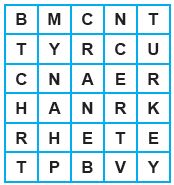Read the following statements and select
the correct option that identifies each
statement as true (T) or false (F) ones.
(i) Forests help to regulate the water
cycle and bring rainfall.
(ii) Tribals worship trees as a form of
God.
(iii) The Bo tribe, which lived on the
Andaman islands, is now extinct.
(iv) Deforestation leads to decrease
in carbon dioxide level in the
atmosphere.
| (i) | (ii) | (iii) | (iv) | |
|---|---|---|---|---|
| A | T | T | T | F |
| B | T | F | T | F |
| C | T | T | F | F |
| D | F | T | F | T |









